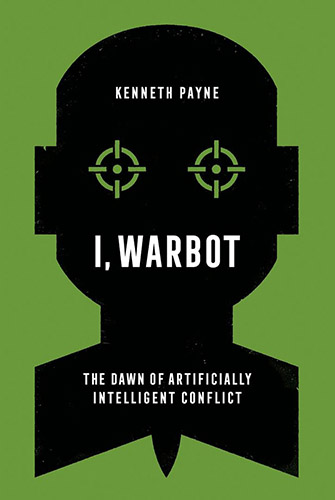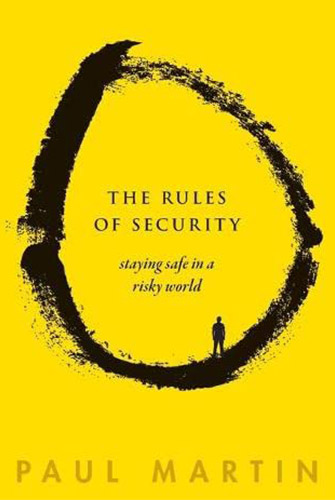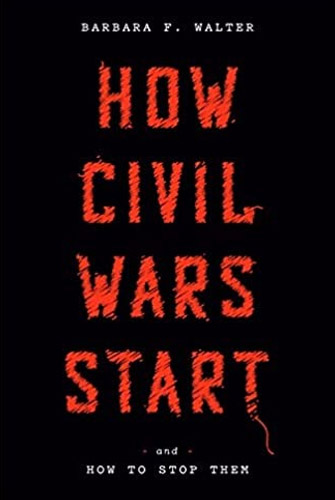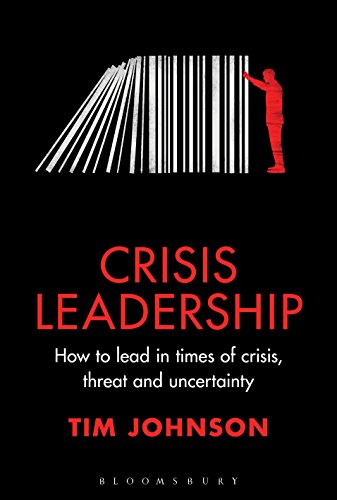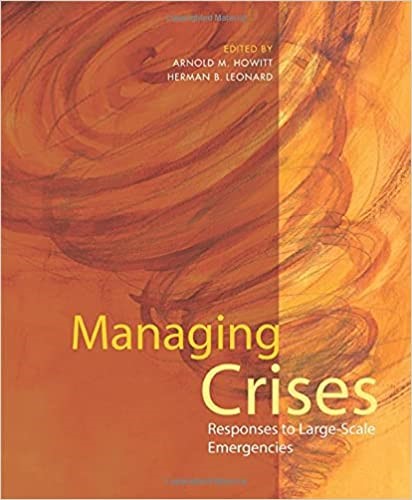Link Of The Week
Kenneth Payne: I, Warbot
As the current war in Ukraine shows, drones have entered the battlefield and are used to great tactical advantage in reconnaissance missions and for attacking single targets. Conventional weapon systems apart from artillery are seeing diminished battlefield value while autonomous weapon systems are gaining importance. Kenneth Payne introduces concepts and state of the art approaches to autonomous weapon systems and AI warfare.
For students interested in AI warfare and its future, this book is a great starting point to dive into the topic.
Previous Weeks' Links
Rules of Security: Staying Safe in a Risky World
Studying security can be challenging task with the plethora of available information that can easily feel overwhelming and too specialized.
Paul Martin, a renowned UK security expert, has written an accessible and entertaining book in which he presents ten general rules of thumb about security and building a useful foundation of basic but valuable information. These range from assessing and reducing risk to building resilience, buzzwords that are no stranger to anyone working in the field of security. For students, his book offers a great introduction to the topic that covers all major areas and can provide a worthwhile starting point for exploring the large field of today’s security issues.
Barbara F. Walter: How Civil Wars Start and How to Stop them
In the last years, the number of published books on a divided US, growing Christian Nationalism and the danger of a crumbling of US democracy have steadily increased.
Since the storm on the Capitol on January 6th, 2021, these topics have been continuously discussed and are still on every historian’s and political scientist’s mind. Barbara Walter examines what the early warning signs of a potential civil war are. Are there different factions? Do armed militias exist? Does social media accelerate the process of undermining the legitimacy of the government and institutions in charge?
We recommend this book for anyone wanting to understand modern civil wars and their warning signs.
LEADERSHIP IN DANGEROUS SITUATIONS: A HANDBOOK FOR THE ARMED FORCES, EMERGENCY SERVICES AND FIRST RESPONDERS
Offering the wisdom of practitioners from the military, law enforcement, fire and rescue, as well as prominent scholars this guide integrates theory and research with practical experience to help the reader prepare for the unique psychological, social, and physical challenges of leading in dangerous contexts. Whether a young soldier preparing for war, seasoned combat commander, SWAT team leader, EMT supervisor, law enforcement patrol unit leader, or fire department lieutenant, those involved in life-and-death situations face common challenges, and the authors draw on their own experiences and that of others to help first responders effectively function in dangerous environments.
Disaster Policy and Politics: Emergency Management and Homeland Security
Disaster Policy and Politics combines evidence-based research with mini-case studies of recent events to demonstrate the fundamental principles of emergency management and to explore the impact that disasters have had on U.S. policy. Paying special attention to the role of key actors―decision makers at the federal, state, and local levels; scientists; engineers; civil and military personnel; and first responders―author Richard Sylves explores how researchers contribute to and engage in disaster policy development and management. The highly anticipated Third Edition explores the radical change in policy and politics after the occurrence of recent disasters such as Hurricanes Harvey, Irma, and Maria; Hawaii’s false nuclear attack warning; and responses to U.S. wildfires. This book’s comprehensive “all-hazards” approach introduces students to the important public policy, organizational management, and leadership issues they may need as future practitioners and leaders in the field.
Leadership. Safe & Secure
Leadership. Safe & Secure. will help you…
- Find your passion in leadership
- Increase safety & security in your organization
- Master self-leadership and -management
- Find the weaknesses that may be holding you back
- Excel through integrating leadership with safety & security
Life is a journey in which you have many unique – sometimes difficult – experiences.
Sometimes you win and sometimes you lose. Nothing is certain, not now and not in the future. Through his many experiences both in private and business environments, Anton Doerig is an expert in leadership and security, and in this groundbreaking book he shares his experiences with you.
Leadership. Safe & Secure. deals with self-management in combination with safety & security. The author encourages you, the reader, to reflect on and question your behavior in self-, employee- and company management. He combines this with the challenges of holistic Safety & Security and Emergency & Crisis Management as no one has done before. It is not always easy to be honest with yourself and those around you, but it is essential for a secure and sustainable success. A success that that you deserve, both privately and professionally!
Bringing Leadership Presence & Essence together with Safety & Security – for All Levels of Management!
You're It: Crisis, Change, and How to Lead When It Matters Most
The faculty of the National Preparedness Leadership Initiative at Harvard University distill their extensive research and experience to teach you how to become a better leader every day, while giving you the tools to handle the inevitable crises that come your way.
Managing crisis well is at the very heart of good leadership. Here, the team from the National Preparedness Leadership Initiative draws on a deep well of research as well as their experience working with leaders to respond to crisis events of all kinds, from the COVID-19 pandemic and the Boston Marathon bombings, to more everyday crises like a product recall or media controversy that can hit corporate operations, risking terrible PR and outrage from customers.
You’re It distills the wisdom the NPLI have gained from observing the way the most effective leaders take charge of situations with real authority, marshal and connect different networks together, and bring their organizations, cities and countries out through the other side of crisis into recovery. You’re It is an essential book for anyone potentially facing a crisis or a wrenching change.
Crisis Leadership: How to lead in times of crisis, threat and uncertainty
Anyone in a leadership position today knows that we live in uncertain times, and disaster can strike any business, at any time, usually without warning. From the collapse of Lehman Brothers and the oil disaster of Deepwater Horizon, to Malaysia Airlines’ loss of two planes, corporations are coming to realize that the impossible can happen all too easily. Public institutions, too, face a range of threats–from global recession, resurgent terrorism, and a stream of appalling natural disasters. For leaders in such organizations, these crisis situations can present both opportunities and threats. How they lead their companies through such challenging times will propel their careers to new heights-–or destroy them completely.
Crisis Leadership examines the challenges faced by leaders at each stage of the crisis “lifecycle,” from the instant they learn of the crisis, through to moments of critical decision-making and the final tumultuous days. Featuring interviews with General Stanley McChrystal, who was the top Commander of American forces in Afghanistan, and Sir Mervyn King, ex-Governor of the Bank of England, the book offers a unique insight into the lessons learned by people in the most challenging of situations, such as Malaysia Airlines (MH17 and MH370, plus the ensuing bankruptcy), Thomas Cook (Corfu deaths), Toyota (Prius recalls), HSBC (tax avoidance and US subsidiary issues), World Health Organisation (the Ebola and Zika outbreaks), and FIFA (corruption scandal).
Blended with operational guidance from the author’s extensive experience in crisis management, Tim Johnson offers an overview of the crisis “lifecycle” to ensure that readers will come away from this book with a honed understanding of the critical nature of each key stage
The Politics of Crisis Management: Public Leadership Under Pressure
In times of crisis, communities and members of organizations expect their leaders to minimize the impact of the crisis at hand, while critics and bureaucratic competitors try to seize the moment to blame incumbent rulers and their policies. In this extreme environment, policy makers must somehow establish a sense of normality, and foster collective learning from the crisis experience. This uniquely comprehensive analysis examines how leaders deal with the strategic challenges and political risks they face. It is based on over a decade of collaborative, cross-national research.
The Power of Resilience: How the Best Companies Manage the Unexpected
The author Yossi Sheffi focuses here on deep tier risks as well as corporate responsibility, cybersecurity, long-term disruptions, business continuity planning, emergency operations centers, detection, and systemic disruptions. Supply chain risk management, Sheffi shows, is a balancing act between taking on the risks involved in new products, new markets, and new processes—all crucial for growth—and the resilience created by advanced risk management.
How the best companies prepare for and manage modern vulnerabilities—from cybersecurity risks to climate change: new tools, processes and organizations for developing corporate resilience are presented in this book.
Crisis Communications: The Definitive Guide to Managing the Message
There are few guarantees in business today. Unfortunately, one of them is the inevitability of a crisis having a potentially major effect on your business and your reputation. When your company finds itself in the midst of a crisis, the ripple effects can disrupt lives and business for the foreseeable future if public opinion is not properly shaped and managed.
Skillfully managing the perception of the crisis determines the difference between a company’s life or death. Because in the pitched battle between perception and reality, perception always wins.
Fortunately, there is a solution. Crisis communications and crisis management legend Steven Fink gives you everything you need to prepare for the inevitable―whether it’s in the form of human error, industrial accidents, criminal behavior, or natural disasters.
The Politics of Crisis Management: Public Leadership Under Pressure
From floods to fires, tornadoes to terrorist attacks, governments must respond to a variety of crises and meet reasonable standards of performance. What accounts for governments’ effective responses to unfolding disasters? How should they organize and plan for significant emergencies? With fifteen adapted Kennedy School cases, students experience first-hand a series of large-scale emergencies and come away with a clear sense of the different types of disaster situations governments confront, with each type requiring different planning, resourcing, skill-building, leadership, and execution.
Grappling with the details of flawed responses to the LA Riots or Hurricane Katrina, or with the success of the Incident Management System during the Pentagon fire on 9/11, students start to see the ways in which responders can improve capabilities and more adeptly navigate between technical or operational needs and political considerations
info@isrmstudents.org

